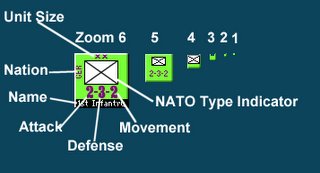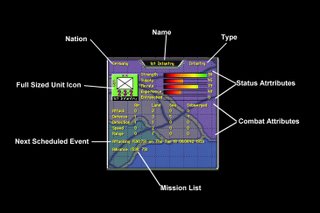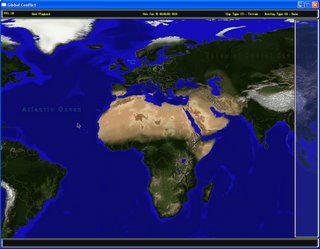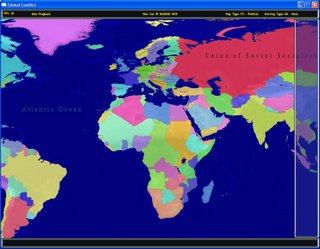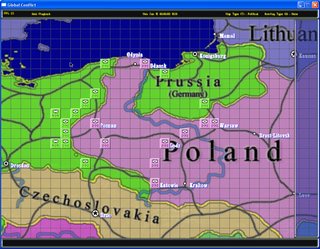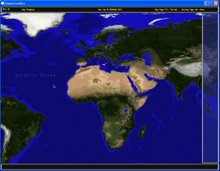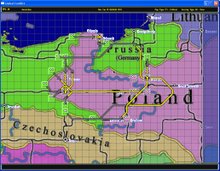In addition, all units consume a small amount of supplies for food each turn. Units carry a certain amount of supply with them and in addition may draw supply from the supply chain when needed.
If a unit runs out of supply and is unable to re-supply from the supply chain, it will not be able to move or fight effectively. In addition it will suffer from attrition and morale loss as long as that condition continues. Ultimately, the unit will eventually disband if things get dire enough.
Here's an example of how this works:
This is a shot from the beginning of the invasion of Poland. The German units are green and the Polish pink. The center icon of each unit is color coded to give a quick overall view of the condition (morale and strength) of each unit. This will change in real time.
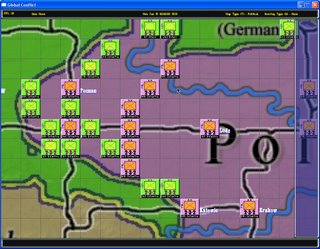
And here is the same view with the supply chain shown. The yellow circles indicate supply centers. The blue chain is the Allied chain and is supplying the Polish units. The red is Axis, white is neutral. The top number shows the % of supply from the supply center that is available at that point. The bottom number shows the total amount of supply available.
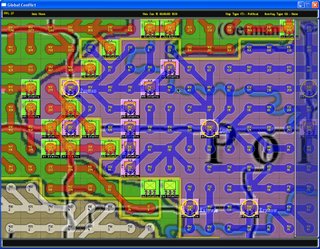
Notice the line of Polish troops (pink) in the middle. They are currently well supplied but far from a supply point. If the Germans can capture the territory between the supply centers and these units, they will be cut off from supply and very vulnerable to attack.
Here's the same game a few turns later when the Germans have managed this maneuver:
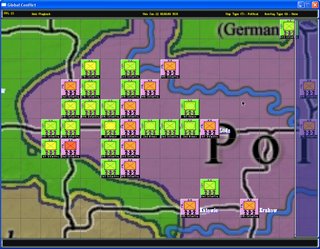
Some armor has gone around the North edge of the line and some infantry has come up from the South effectively cutting off these units. In addition, the city on the Western edge has been cut off from these units.
Looking again at the position with the supply chain overlay, you can see that these units are completely cut off:
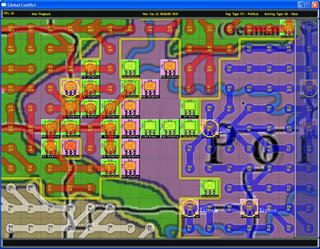
Note that the German units behind the line are also cut off. Its critical for the Germans to break through the line now in order to extend supply to these units as they are currently outside of the range of any of the supply cities.
In a future post, I'll introduce a solution to this problem: The headquarters unit.
HQ units act as mobile supply points allowing combat deep in enemy territory far from any friendly cities. They also have other abilities like leader specific missions, morale boosts etc. A single well placed HQ would allow the German units behind the Polish lines to continue the attack without the need for a breakthrough.




